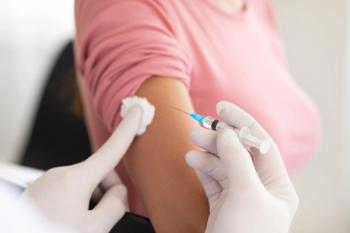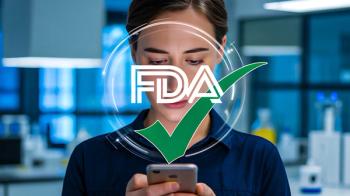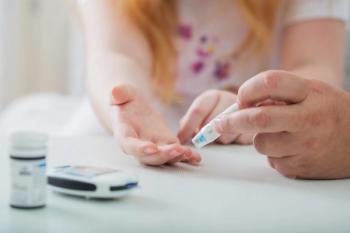
- August 2015 Pain Awareness
- Volume 81
- Issue 8
Afrezza
Nearly 30% of patients with diabetes have reported that injectable insulin was the most difficult part of their care regimen.
Nearly 30% of patients with diabetes have reported that injectable insulin was the most difficult part of their care regimen.1 On June 27, 2014, the FDA approved Afrezza, an inhaled form of insulin manufactured by MannKind Corporation and distributed by sanofi-aventis.2 This new medication may be the answer for many patients with type 2 diabetes (T2D) who are reluctant to start subcutaneous insulin and therefore require another approach to achieve glycemic control.
Pharmacology and Pharmacokinetics
Afrezza is an inhaled regular human insulin that can be used in patients with type 1 diabetes (T1D) or T2D to help achieve postprandial glycemic control. It suppresses hepatic glucose production and stimulates peripheral glucose uptake by skeletal muscles and fat. Afrezza is also absorbed within 12 to 15 minutes, peaks by 30 minutes, and declines to baseline within 180 minutes.3 Because it does not replace long-acting basal insulin, however, it must be used in combination for patients with T1D.
Dosing and Administration
Afrezza, which is administered at the beginning of each meal and must be taken with food to prevent hypoglycemia, is available in 3 doses: 4-, 8-, and 12-unit doses that contain 0.35, 0.7, and 1 mg of insulin, respectively (Figure 1; the 12-unit dose cartridge is not shown). The recommended starting dose for insulin-naïve patients is 4 units. If a patient with diabetes is switched from subcutaneous prandial insulin, providers should use the dose conversion chart shown in online Figure 2. Patients requiring doses greater than 12 units will need to inhale multiple cartridges.
Clinical Trials
The efficacy of Afrezza for patients with T1D or T2D was established through 2 clinical trials. In one trial of patients with T1D, Afrezza was compared to rapid-acting insulin aspart, while both groups used concomitant basal insulin. The patients had adequately controlled glycated hemoglobin (A1C) levels of 7.94 for the Afrezza group and 7.92 for the insulin aspart group. Over a 24-week period, Afreeza met the required noninferiority margin of 0.4%, but fewer patients achieved an A1C target level below 7%: 27.1% in the insulin aspart group versus 13.8% in the Afrezza group.3
In the second trial of patients with T2D, Afrezza was compared to placebo inhalation. Oral diabetic medications were also used in both groups, which included tolerable doses of metformin or the use of 2 or more oral agents. Both groups had uncontrolled A1C levels, with the Afrezza group at 8.25 and the placebo group at 8.27. After a 24-week study period, Afrezza showed a 0.82 drop in A1C, while the placebo group had a smaller drop of 0.42. Among patients in the Afrezza group, 32.3% reached the A1C goal of below 7% compared with 15.3% in the placebo group.3
Contraindications, Warnings, and Precautions
The FDA has issued a black box warning stating that Afrezza is contraindicated in patients with chronic lung disease, such as asthma and chronic obstructive pulmonary disease, due to the risk of acute bronchospasms. Providers are urged to check and monitor patients’ lung function prior to starting and while taking Afrezza.3
Afrezza may increase the risk of lung cancer, but data are insufficient to determine whether Afrezza has an effect on lung tumors or respiratory tract tumors. Afrezza is a Pregnancy Category C drug and should not be used unless the benefits outweigh the risk.3
Adverse effects include cough, sore throat, diarrhea, nausea, headache, urinary tract infection, fatigue, hypoglycemia, hypokalemia, bronchospasms, and anaphylaxis. In clinical trials, cough was the most common reason for discontinuation of therapy.3 Concomitant use of thiazolidinediones may increase the risk of fluid retention and heart failure. Concomitant use of medications to treat diabetes increases the risk of hypoglycemia.3
Drs. Smith and Mosley are assistant professors of pharmacy practice, and Dr. Islami was a PharmD candidate when this was prepared, at Florida A & M University College of Pharmacy and Pharmaceutical Sciences, Crestview Education Center.
References
- Gustaitis J. Needle anxiety. Diabetes self-management website. www.diabetesselfmanagement.com/about-diabetes/general-diabetes-information/needle-anxiety. Published November 5, 2010. Accessed January 27, 2015.
- FDA approves Afrezza to treat diabetes [press release]. Silver Spring, MD: US Food and Drug Administration; June 27, 2014. www.fda.gov/NewsEvents/Newsroom/PressAnnouncements/ucm403122.htm. Updated June 30, 2014. Accessed January 29, 2015.
- Afrezza [package insert]. Danbury, CT: MannKind Corporation; 2014.
Articles in this issue
about 10 years ago
Senior Market for Wearable Health Devices May Be Larger Than Expectedabout 10 years ago
Generic Product News (August 2015)about 10 years ago
Benign Breast Diseases Associated with Thyroid Disordersabout 10 years ago
Breast Cancer Survival Improved by 2 Drug Classesabout 10 years ago
Intravenous Lidocaine May Prevent Chronic Pain After Mastectomyabout 10 years ago
Pain Management: Aisle 4about 10 years ago
Case Studies (August 2015)about 10 years ago
Can You Read These Rxs? (August 2015)about 10 years ago
Pet Peeves (August 2015)Newsletter
Stay informed on drug updates, treatment guidelines, and pharmacy practice trends—subscribe to Pharmacy Times for weekly clinical insights.

















































































































































































































